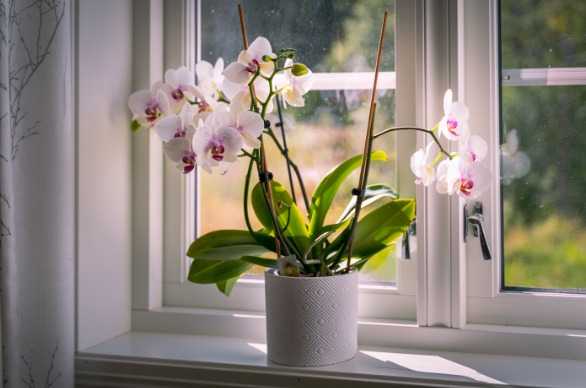Best Indoor House Plants: Establishing a lush indoor oasis can be made effortless through strategically selected houseplants. From whimsical cascading vines and elegant palms purifying air, to blooming indoor plants that add visual interest and provide fresh oxygen, these indoor plants not only beautify our living spaces but also contribute to creating healthier and more vibrant home environments.
So whether you are an experienced plant parent or just beginning, here is our curated list of 20 Best Indoor House Plants which will inspire your green thumb and turn your home into an oasis of greenery and tranquility.
How To Choose Best Indoor House Plants?
Selecting suitable indoor house plants requires carefully considering several aspects, from lighting conditions in your home to which plants need more light than others. Once these criteria have been identified, move onto selecting appropriate houseplants based on them. As each plant prefers different light levels and conditions, consider your lifestyle and amount of care you are willing to provide before selecting an ideal plant for yourself.
Low maintenance plants would likely make for easier care should your schedule become increasingly hectic or you are new to plant care. Be mindful of the size and scale of the space you’re decorating when selecting houseplants that match it without overwhelming it. Furthermore, take any specific preferences into consideration such as plants that improve indoor air quality or those featuring unique foliage or blooms into account so as to select indoor house plants which not only add character and flair but also blend seamlessly into your life and lifestyle.
- Advertisement -
Here Is The List Of Best Indoor House Plants
- Snake Plant (Sansevieria) (Best Indoor House Plants)
- Spider Plant (Chlorophytum comosum)
- Pothos (Epipremnum aureum)
- Peace Lily (Spathiphyllum)
- ZZ Plant (Zamioculcas zamiifolia) (Best Indoor House Plants)
- Chinese Money Plant (Pilea peperomioides)
- Monstera Deliciosa
- Fiddle Leaf Fig (Ficus lyrata)
- Philodendron
- Rubber Plant (Ficus elastica) (Best Indoor House Plants)
- Boston Fern (Nephrolepis exaltata)
- Aloe Vera
- Dracaena
- Devil’s Ivy (Epipremnum aureum)
- Snake Plant (Sansevieria trifasciata) (Best Indoor House Plants)
- Swiss Cheese Plant (Monstera adansonii)
- African Violet (Saintpaulia)
- Jade Plant (Crassula ovata)
- Anthurium
- Bromeliad (Best Indoor House Plants)
20 Best Indoor House Plants
1. Snake Plant (Sansevieria) (Best Indoor House Plants)
The Snake Plant, scientifically known as Sansevieria, has long been prized as an indoor choice due to its striking appearance and low maintenance requirements. Characterized by tall, upright leaves resembling snake-skin in appearance, this plant is exceptionally adaptable and thrives under various lighting conditions including low-light levels. Due to its resilience and resilience against neglect and drought conditions, this is an excellent option for busy individuals or beginners to plant care.
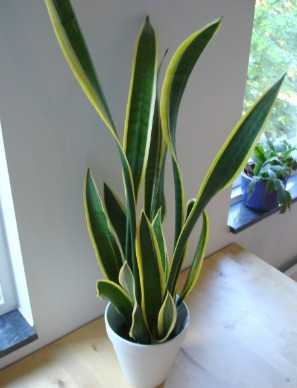
Snake Plants are widely recognized for their air purifying abilities, eliminating formaldehyde and benzene from the air to promote healthier environments indoors. With minimal care needed and occasional indirect bright lighting sources needed for maintenance purposes, their presence adds elegance and greenery while simultaneously improving air quality.
2. Spider Plant (Chlorophytum comosum)
The Chlorophytum comosum or Spider Plant, is prized for its graceful arching foliage adorned with spider-like plantlets that hang from slender stems, creating an eye-catching display. Spider plants are revered plants that can purify indoor air by filtering out formaldehyde and carbon monoxide emissions from indoor spaces, making a healthy home atmosphere even cleaner than it would otherwise be. Spider Plants thrive under bright indirect lighting conditions but will tolerate lower light conditions as well – making them versatile additions to any indoor space!

Spider Plants are low maintenance plants to care for and propagate, perfect for beginner as well as veteran plant enthusiasts alike. Watering regularly and applying fertilizer occasionally promotes healthy growth as well as prolific reproduction of new plantlets that contribute to beautifying and freshening up any room they live in.
3. Pothos (Epipremnum aureum)
Pothos plants (scientifically known as Epipremnum aureum) are beloved indoor gardens and hanging baskets alike, due to their lush trailing vines and vibrant leaves that often cover them. Pothos’ beautiful heart-shaped leaves feature various shades of green, yellow and white for added natural charm in any environment. Pothos houseplants are known for being extremely forgiving houseplants. From low light levels and indirect illumination, to tolerate being left neglected from time to time – making them the perfect option for beginners or people leading busy lifestyles.

Pothos plants are well known for their air purifying abilities, effectively filtering formaldehyde and benzene out of the air to improve indoor air quality. Proper care includes regular watering when soil becomes dry as well as cutting back overgrown growth for bushier growth, to keep your Pothos healthy and vibrant in order to bring life and vitality into any room of the home.
4. Peace Lily (Spathiphyllum)
Peace Lilies, otherwise known by their scientific name Spathiphyllum, are revered indoor houseplants due to their beautiful white blooms and glossy dark-green leaves that create an elegant display in indoor environments. Peace Lilies are prized plants due to their ability to thrive under low light conditions, making them suitable for offices, bedrooms or any areas with restricted natural illumination.
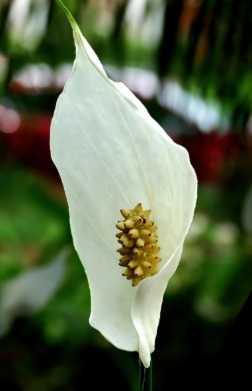
This hardy plant requires only occasional watering and fertilization in order to promote blooming and healthy growth. Peace Lilies make fantastic air purifiers, efficiently eliminating harmful pollutants like ammonia, benzene and formaldehyde from indoor air quality for healthier living environments. Given proper care, Peace Lilies bloom intermittently year-round to add beauty and serenity to any space they call home.
5. ZZ Plant (Zamioculcas zamiifolia) (Best Indoor House Plants)
The ZZ Plant (Zamioculcas zamiifolia), is prized for its glossy green foliage and adaptability, making it a fantastic option for indoor spaces with limited light or inconsistent watering schedules. It makes an attractive statement while remaining resilient. Native to eastern Africa, ZZ Plants are low maintenance drought-tolerant plants featuring thick succulent-like stems with glossy lance-shaped leaves for an instant touch of sophistication in any room. ZZs require little in terms of watering needs while flourishing under low to bright indirect lighting conditions.
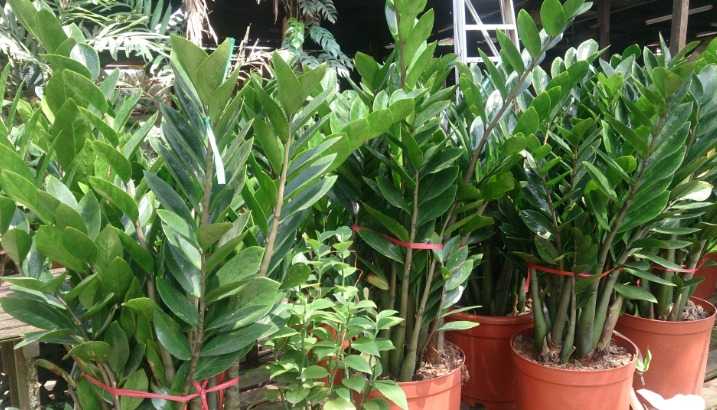
Plants like succulents are ideal for busy individuals or those new to plant care who prefer fast and simple care solutions, as their adaptable qualities allow for minimal attention from owners and caretakers alike. ZZ Plants are well known for their air purifying capabilities, effectively filtering out pollutants such as xylene, toluene and benzene from indoor air quality and helping improve it. Their striking appearance and friendly disposition bring natural beauty and vitality into any indoor space – adding something truly beautiful.
6. Chinese Money Plant (Pilea peperomioides)
Pilea peperomioides is known scientifically, has recently gained much acclaim as being an iconic plant with coin-shaped leaves that give off an alluring charm and stunning aesthetic appeal. Originating from Southwestern China, this plant features round pancake-like foliage on slender stems for an eye-catching display of greenery.
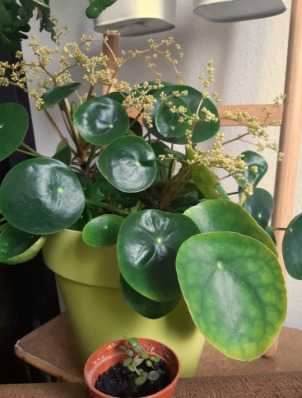
Easy to cultivate and propagate, Chinese Money Plant thrives best under bright indirect lighting with well-draining soil conditions. Regular watering and fertilizing help promote healthy growth with vibrant foliage, while its aesthetic beauty makes this plant popular both at home and work environments. Furthermore, its symbolic association of good fortune makes this unique species such an auspicious option to add some charm and positivity into any indoor space. The Chinese Money Plant adds flair and positivity with its quirky appearance that adds charm.
7. Monstera Deliciosa
Also renowned as ‘The Swiss Cheese Plant,’ Monstera Deliciosa stands out with large glossy leaves featuring distinctive perforations pattern to give an eye-catching appearance. Monstera Deliciosa, native to tropical rainforests in Central America, is beloved among indoor gardeners for its striking foliage and easy care requirements. Monstera Deliciosa thrives best under bright, indirect light in well-draining soil conditions; though, it will tolerate lower light conditions if necessary.
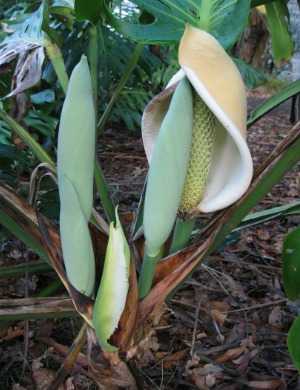
Regular watering during the growing season and occasional misting are key in maintaining optimal hydration levels and encouraging healthy development of Monstera Deliciosa plants, leading to lush foliage growth that yields impressive specimens with aerial roots that add tropical elegance and intrigue to any interior space. Its striking foliage will sure catch attention and win admiration of all who encounter it.
8. Fiddle Leaf Fig (Ficus lyrata)
Ficus lyrata (Fiddle Leaf Fig), also renowned as its scientific name indicates, is widely appreciated for its large violin-shaped leaves and statuesque form, making it an attractive interior decor element. Originating in Western Africa, this stunning plant requires bright indirect lighting conditions with well-draining soil in order to thrive – though with proper care it may adapt to lower light environments as well.
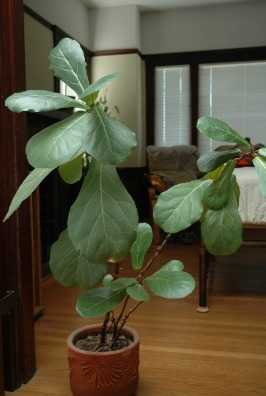
Maintain optimal moisture levels to avoid issues like root rot. Pruning can encourage bushier growth and keep it from becoming leggy; its majestic foliage and elegant silhouette become the center of admiration and conversation in any indoor space.
9. Philodendron
Philodendrons are popular tropical houseplants known for their attractive foliage and versatility in indoor settings. Philodendrons offer an abundant selection of species and cultivars that range from heart-shaped leaves, trailing vines, unique leaf patterns and flower colors – suitable to meet many aesthetic preferences.
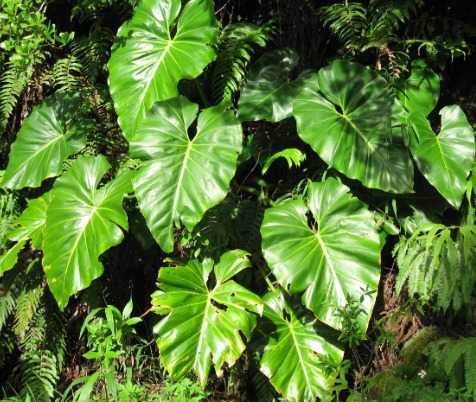
Philodendrons are among the easiest plants to care for. Preferring bright indirect lighting conditions with well-draining soil and regular watering–allowing it to dry slightly between watering sessions–they make great additions to hanging baskets or climbing up moss poles to bring an element of nature indoors and create an inviting and revitalizing ambiance.
10. Rubber Plant (Ficus elastica) (Best Indoor House Plants)
Rubber Plant (Ficus elastica), known for its thick, glossy leaves and tall stature is one of the most coveted houseplants to add some flair and character into an indoor space. Native to Southeast Asia, this tropical plant thrives under bright indirect lighting with well-draining soil conditions; although it can tolerate lower light conditions. Regular watering during the growing season and reduced irrigation during winter helps ensure optimal levels of hydration, helping prevent issues like root rot.
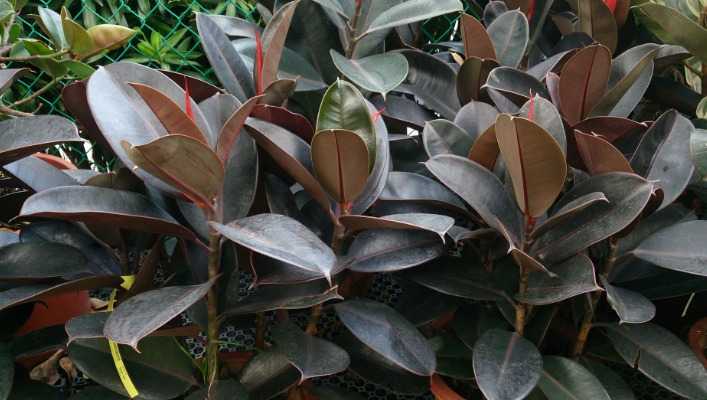
Rubber Plants provide air purifying qualities and can remove harmful toxins from indoor air, making for a healthier living environment. Displayed alone or as part of a grouping, their air-purifying qualities create a serene and welcoming ambiance within any interior space they grace.
11. Boston Fern (Nephrolepis exaltata)
The Boston Fern (Nephrolepis exaltata), widely recognized for its graceful arching fronds and feathery foliage is a beloved classic among indoor gardens and hanging baskets alike. Tropical regions provide optimal growing conditions for this fern, making it perfect for bathrooms and kitchens that receive bright filtered light.
Regular watering and misting help meet its moisture requirements so its delicate leaves do not dry and become dry or brittle over time. Fertilizing during the growing season helps promote lush growth and vibrant greenery, adding air purifying capabilities as well as natural elegance to any room it occupies. Boston Ferns remain beloved favorites among plant enthusiasts for creating a relaxing and invigorating indoor atmosphere.
12. Aloe Vera
Aloe Vera has long been revered not only for its aesthetic qualities, but also due to its many medicinal and therapeutic applications. Native to arid regions in North Africa, this succulent plant features thick leaves filled with thick gel-like substance known for soothing skin irritations and burns. Aloe Vera is easy to take care of.
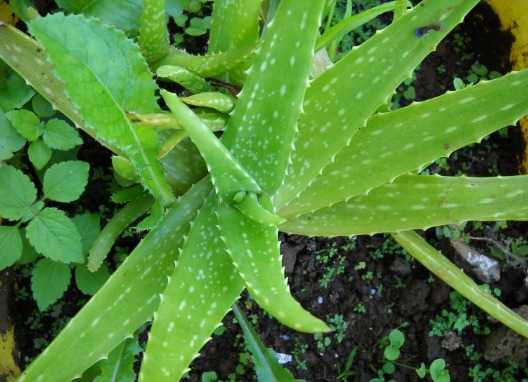
Preferring bright indirect lighting conditions with well-draining soil, Aloe Vera thrives best under regular irrigation during its growing season and reduced watering during its dormant period – helping prevent root rot. Boasting both ornamental beauty and medicinal qualities, Aloe Vera brings fresh greenery into any indoor space while serving both as decorative accents and remedies for minor ailments.
13. Dracaena
These tropical plants are prized for their striking foliage and air purifying capabilities – qualities which make them popular choices for interior decorating purposes. Dracaena species and cultivars offer something to satisfy nearly any aesthetic requirement – their wide array of species and cultivars offer plants with spikey leaves, variegated patterns and elegant forms for any preference. Dracaenas are generally easy to care for plants.
For optimal performance, bright indirect light with well-draining soil conditions are preferred; they may adapt to lower light conditions if given enough attention and proper care. Regular watering with minimal soil drying out between watering sessions and occasional fertilization promote healthy growth and vibrant foliage in Dracaena plants, whether used as tall floor plants or compact tabletop specimens – adding tropical beauty and freshness into any indoor setting, for an instantly tranquilizing ambience.
14. Devil’s Ivy (Epipremnum aureum)
Devil’s Ivy (Epipremnum aureum), more commonly referred to by its scientific name of Epipremnum aureum, is beloved perennial beloved for its trailing vines and heart-shaped leaves that grace hanging baskets or cascading displays. Native to tropical forests of Southeast Asia, this versatile plant thrives best under indirect light with well-draining soil conditions; although lower light conditions are tolerated as long as regular watering and fertilization take place to promote its vigorous growth and lush foliage.

Devil’s Ivy is an extremely adaptable plant, thrives in various indoor environments and makes an excellent option for beginner as well as veteran plant enthusiasts. Boasting air-purifying properties and cascading foliage, Devil’s Ivy adds natural beauty and vitality to any interior space, creating an inviting and lush ambiance in any living space.
15. Snake Plant (Sansevieria trifasciata) (Best Indoor House Plants)
The Snake Plant, scientifically known as Sansevieria trifasciata, is beloved indoor decoration choice due to its architectural form and resilience, often chosen as part of interior decor schemes. Boasting upright leaves with striking patterns on them that add modern elegance into any room it graces, the Snake Plant brings modernity into any setting it inhabits. Snake plants, native to Africa’s dry regions, require bright indirect lighting with well-draining soil that drains easily; it prefers full light conditions but can tolerate low illumination or infrequent watering.
Snake Plants can purify indoor air by filtering out pollutants like formaldehyde and benzene, making them an invaluable addition to any home or office setting. Requiring minimal care requirements, they thrive under difficult conditions – an excellent choice for novice and seasoned plant enthusiasts looking for something vibrant in interior spaces.
16. Swiss Cheese Plant (Monstera adansonii)
Monstera adansonii, more commonly referred to as The Swiss Cheese Plant, is well known for its distinctive foliage adorned with oval holes resembling slices of Swiss cheese – hence its moniker. Central and South American native, this tropical vine thrives when exposed to bright indirect lighting with well-draining soil, though lower light conditions are tolerable. Regular watering during its growing season and occasional misting are necessary to maintaining optimal levels of hydration for healthy development and optimal performance.
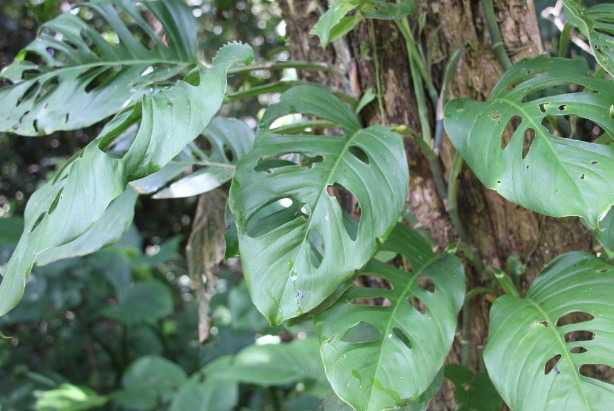
With its trailing vines and distinctive leaves, Swiss Cheese Plant adds tropical allure to any indoor space, creating an eye-catching display as its vines cascade from shelves or hanging baskets. As this plant matures further it may produce fenestrations which only enhance its charm and visual appeal further.
17. African Violet (Saintpaulia)
African Violets (scientifically known as Saintpaulia) are beloved indoor flowering plants beloved for their delicate velvety petals and vibrant blooms, making them popular choices. Native to Eastern Africa, African Violets thrive best with bright indirect light conditions in well-draining soil; although lower light conditions are acceptable.
Regular bottom watering to avoid wetting their foliage, along with occasional fertilizations treatments helps promote prolific blooming and healthy foliage development for optimal blooming throughout the year – creating cheerful indoor environments filled with beautiful color! With proper care grown African Violets provide growers with vibrant flowers year round that bring cheery color all year long while adding cheerful and inviting atmosphere that fill any indoor setting.
18. Jade Plant (Crassula ovata)
The Jade Plant (Crassula ovata), is beloved indoor succulent garden. A native of South Africa, this drought-tolerant species thrives under indirect light with well-draining soil; although lower light conditions and reduced watering during the winter months is acceptable. With its striking form and auspicious associations to prosperity and good fortune, its beauty adds tranquility and positive energy into any interior space, creating a relaxing ambiance and creating peaceful relaxation.

19. Anthurium
Anthuriums are beloved flowering plants renowned for their exotic flowers and glossy, heart-shaped leaves – two striking qualities which make them standout additions to indoor gardens and floral arrangements. Hailing from tropical regions in Americas, Anthuriums can tolerate lower light conditions with proper care; regular watering helps ensure optimal moisture levels to promote prolific blooming of red, pink, white or orange hued blooms to brighten any interior setting with beauty and allure.
With proper attention given them they create long-lasting bouquets full of beauty which bloom throughout their lives to add long lasting tropical elegance & allure that create a captivating centerpiece in any setting creating captivating focal points of beauty with captivating blooming long lasting bouquets making an extraordinary centerpiece centerpiece in any interior setting creating captivating focal points of beauty allure.
20. Bromeliad (Best Indoor House Plants)
Bromeliads are tropical plants renowned for their distinctive, rosette-shaped foliage and vibrant flowers, making them popular choices for indoor decoration. Bromeliads offer an abundance of species and cultivars for any aesthetic preference imaginable, featuring striking foliage patterns with many flower color varieties to suit them. Bromeliads are generally easy to care for; they prefer bright indirect lighting with well-draining soil conditions; however they can adjust to lower light conditions with proper care.
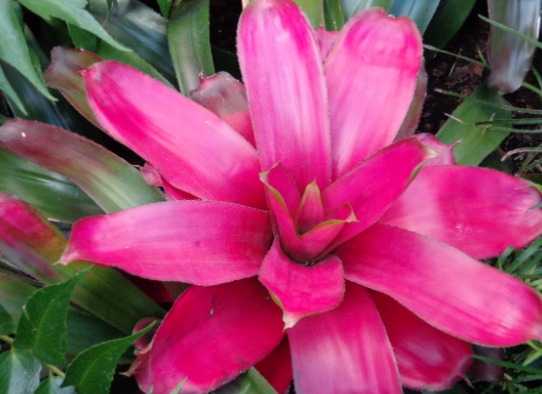
Regular watering of their central cup and occasional misting help ensure optimal moisture levels to facilitate healthy growth, adding tropical flair and long-lasting flowers that create an unforgettable indoor space experience.
Best Indoor House Plants Pros & Cons
Pros
Air Purification: Indoor plants make an effective means of purifying air quality by filtering out impurities that pollute indoor environments, ultimately improving indoor air quality and creating healthier living spaces.
Enhance aesthetics: Indoor plants add natural beauty and vitality to indoor spaces, softening harsh lines while creating an inviting and soothing ambience.
Studies have proven that being around indoor plants can lower stress levels and promote relaxation – leading to overall improvements in well-being and improved wellbeing.
Focus and Productivity Enhancing Benefits of Indoor Plants: Indoor plants have long been recognized to increase focus, creativity and productivity – making them highly recommended additions to home offices or workspaces.
Indoor plants offer an oasis of the natural world right within urban environments, creating an experience of tranquility and grounding for visitors.
Therapeutic Benefits: Caring for indoor plants can be both rewarding and therapeutic; encouraging mindfulness practice while decreasing anxiety levels.
Humidity Regulation: Plants that release moisture through transpiration help regulate indoor humidity levels for more comfortable winter living environments by helping to increase humidity.
Cons
Indoor plants need constant care – including watering, pruning and occasional repotted which may not fit with busy lifestyles or frequent travel schedules.
Indoor plants can become vulnerable to various pests and diseases such as spider mites, aphids, mealybugs as well as root rot and powdery mildew, all of which pose threats that could potentially harm or kill their host plant if left unattended. If left unchecked promptly these threats could prove disastrous to any indoor garden.
Allergies: Certain people may have an adverse reaction to specific indoor plants or pollen they produce, leading to itchy eyes, runny nose, sneezing fits or respiratory distress.
Space Constraints: Indoor plants need sufficient room to grow and flourish in small living environments like apartments and dormitories, which may limit how quickly their growth and success.
Pets and children: Some indoor plants can be toxic to pets and children if consumed, so it’s essential that non-toxic varieties be selected, placed out of reach of curious pets and young children, and kept out of sight from potential hazards.
Overwatering or Underwatering: Finding an optimal watering balance can be difficult, with excessive or inadequate amounts leading to root rot or dehydration and ultimately jeopardizing plant health. Overwatering or underwatering should always be treated as serious risks that should not be neglected when watering your plant(s).
Cost: When starting to shop for indoor plants and their supplies – such as pots, soil and fertilizers – on a tight budget it can add up quickly.
Best Indoor House Plants Conclusion
Indoor house plants bring many advantages that enhance our living environments and well-being, from purifying air quality to relieving stress and increasing productivity. Their presence brings nature indoors for an enhanced, harmonious living experience. No matter the maintenance requirements or potential challenges like pests or allergies, caring for indoor plants offers significant rewards.
Not only are they visually stunning additions to our homes but they can also promote greater connection to nature while increasing serenity and mindfulness in daily life. Careful selection and proper attention ensure indoor house plants thrive, enriching our surroundings with their beauty and vitality. Introducing indoor gardening into your living space is both rewarding and therapeutic, turning any space into an oasis of greenery and serenity.
Best Indoor House Plants FAQ’s
What are the best indoor house plants for beginners?
Snake plants, pothos, spider plants and peace lilies make excellent beginner choices because of their relatively low maintenance requirements and light tolerance requirements.
How often should I water my indoor plants?
Watering frequency depends on many variables such as plant species, size, soil composition and environmental conditions. As a general guideline, however, you should aim to water when the top inch of soil feels dry to touch.
Which indoor plants are pet-friendly?
Indoor plants that are safe for pets to ingest may include spider plants, Boston ferns, African violets and orchids. It is crucial that research be performed prior to purchasing specific varieties so as to make an informed decision and protect both you and your animal companion.
How can I prevent pests on my indoor plants?
Regular inspection of plants for signs of pest infestation, maintaining good air circulation and not overwatering can all help protect from future outbreaks of insects or vermin infestation. Should infestation arise, natural solutions like Neem oil and Insecticidal Soap could prove effective solutions.
What are some low-light indoor plants?
Low-light conditions are well suited to snake plants, pothos, ZZ plants and peace lilies; while they might not thrive there as much, these varieties still tend to tolerate it better than plants with higher lighting needs.
How do I know if my indoor plant needs repotting?
Signs that a plant requires repotting include roots growing out of drainage holes or becoming rootbound, with excess water draining off quickly from its pot. Repotting should take place either during spring or early summer when plants are actively growing.

